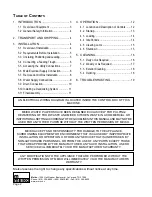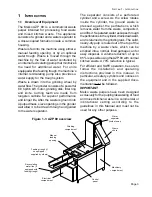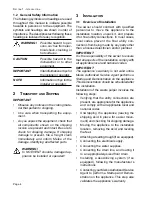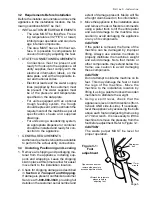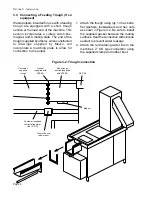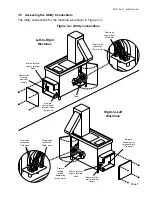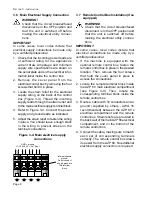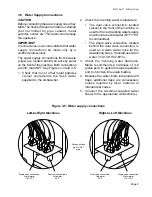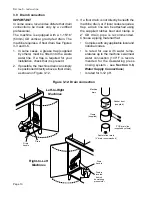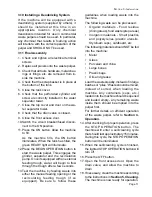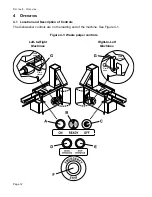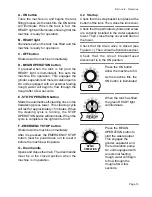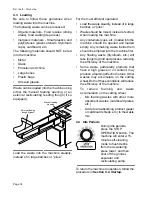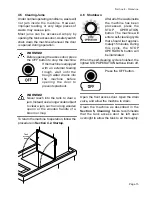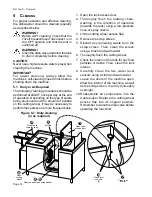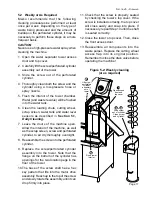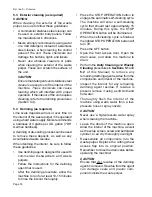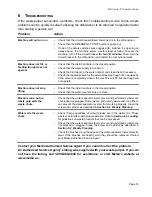
Page 14
S
ECTION
4 - O
PERATION
4.3 Loading
Be sure to follow these guidelines when
loading waste into the machine.
The following waste can be processed:
•
Organic materials - Food residue (dining
areas), food waste (prep areas)
•
Inorganic materials - Small plastics and
polystyrenes (plastic utensils, Styrofoam
cups), cardboard, etc.
The following materials should NOT be fed
into the machine:
•
Metal
•
Glass
•
Porcelain and china
•
Large bones
•
Plastic bags
•
Oils and grease
Waste can be loaded into the machine using
either the manual feeding opening or an
external recirculating feeding trough (if so
equipped).
External feeding
trough (typical)
Manual feeding
opening
For the most efficient operation:
•
Load the waste steadily, instead of in large
batches or “piles.”
•
Waste should be mixed, instead of sorted,
when loading the machine.
•
Any containers (cups, etc.) loaded into the
machine should be opened and loaded
empty. Any remaining waste inside them
should be emptied into the machine first.
•
Any floating waste (Styrofoam, etc.) will
take longer to grind and process, reducing
the efficiency of the machine.
•
Some waste, particularly products that
have a high grease or oil content, may
produce a foaming effect in the tank. Other
wastes may accumulate on the cutting
wheel. Both of these conditions will reduce
the efficiency of the machine.
To reduce foaming and waste
accumulation on the cutting wheel:
-
Mix foaming wastes with other, more
absorbent wastes (cardboard plates,
etc.)
-
Add a foam-absorbing product (paper
or cardboard shreds, etc.) to the waste
mix.
Load the waste into the machine steadily,
instead of in large batches or “piles.”
4.4 Idle Periods
During idle periods,
press the STOP
OPERATION button. The
machine will enter a 15-
minute self-cleaning
mode to flush debris
from the dewatering
press tower, and then
shut off the grinder,
separator and
recirculating pump.
To return the machine to operation, follow the
procedure in
Section 4.2,
Startup.


